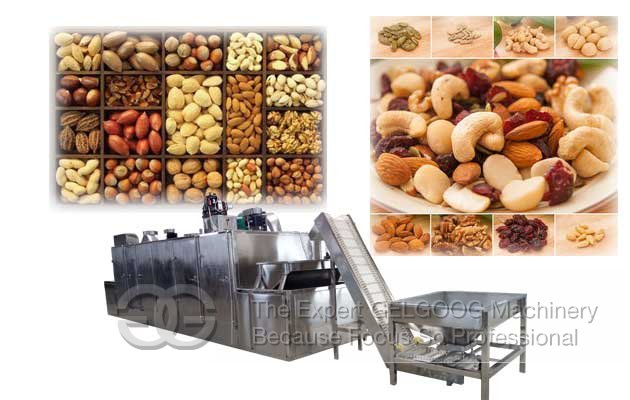Blog
Contact Us
Mobile: 0086-15515597212
Tel / Fax : 0086-371-63398802
Email :serena@machinehall.com
ADDR:7th Floor, Building 8, Jingkai Square, No.1507, Hanghai East Road, Free Trade Zone, Zhengzhou, China.
How Correctly Roasting Nut?
Publish tina On 2017-09-14
Roasting and fat quality
One aspect of nuts and seeds that are particularly interesting to many people is that when roasting, their fat quality may be impaired. Generally, nuts and seeds are more stable than expected. (about 75 to 80 percent of the calories found in nuts and seeds come from fat.) This greater than expected stability may be related to their relatively high monounsaturated fat and polyunsaturated fats. Nuts such as cashews and almonds have 2-4 times monounsaturated fat, and these two types of fat, monounsaturated fat, are not susceptible to heat and other factors. The less sensitive remains are saturated fat, which is roughly equivalent to the amount of unsaturated fat in the cashews, about 33 to 50 percent of the polyunsaturated fat content of peanuts, pumpkin seeds and sesame seeds. These relatively high monounsaturated fats and saturated fats help support overall stability of fat content in nuts and seeds.
There are two notable exceptions to this rule: flaxseed and walnuts. Both foods contain more polyunsaturated fats than other types of fat and high levels of omega-3 polyunsaturated fats. In all of our eight nuts and seeds, we'll put these two foods separately, because they're particularly important to prevent heat loss. If not consumed in the original form, you might consider baking these two special foods at lower temperatures and/or less.


The length of the roasting time
Almost all of the studies were analyzed in 10-60 minutes. According to our own taste, aroma, texture, taste, we can't find any reason to bake at the most extreme end of this period. To maintain our normal WHFoods method, cooking time is minimal and the results are delicious, we suggest that the baking time is about 10-20 minutes, not longer.
Cookware for roasting
We recommend that a stainless steel baking sheet or cast iron cooker that is unlubricated for nuts and seeds roasting. In both cases, you create a layer of nuts or seeds to make the air flow around each nut or seed more evenly. Turn the oven on a few times, lightly spread the nuts or seeds lightly, slightly adjust, then slightly adjust to make the baking even more uniform. Always wear oven gloves to protect your hands and forearms.
The shelf life of roasted nuts and seeds
While raw nuts and seeds can usually be stored in a sealed container in your fridge for months, we don't recommend baking nuts and seeds in the same way. Instead, we recommend baking a small amount of nuts and seeds over the next few days. The suggestion is based on our caution about the finer nutritional ingredients of roasted nuts and seeds. Keep your toasted nuts and seeds tightly sealed in the fridge, even if you plan to enjoy them in a relatively short time.
Check oven temperature
To ensure that you can cook at the temperature you choose, we recommend that you check the accuracy of oven temperature. This check can be easily done with a cheap oven thermometer. You can find an oven thermometer on any hardware or kitchen store, even a grocery store kitchen rack. Find a stainless steel, spring-operated dial with a fixed bottom and a hook mounted on an oven rack. The cost is typically $5 to $12.
To test your oven, place the thermometer on a central shelf, preheat the oven for 15 minutes, and then compare the readings on the thermometer to the oven readings. If it is above or below your oven spec, then you know that your oven tends to be hot or cold and can be compensated. For example, if your table reads 170 ° F, but the thermometer reads 200 ° F, do you know your oven 30 degrees tend to run hot, you can adjust the temperature drops to 140 ° F to compensate.

